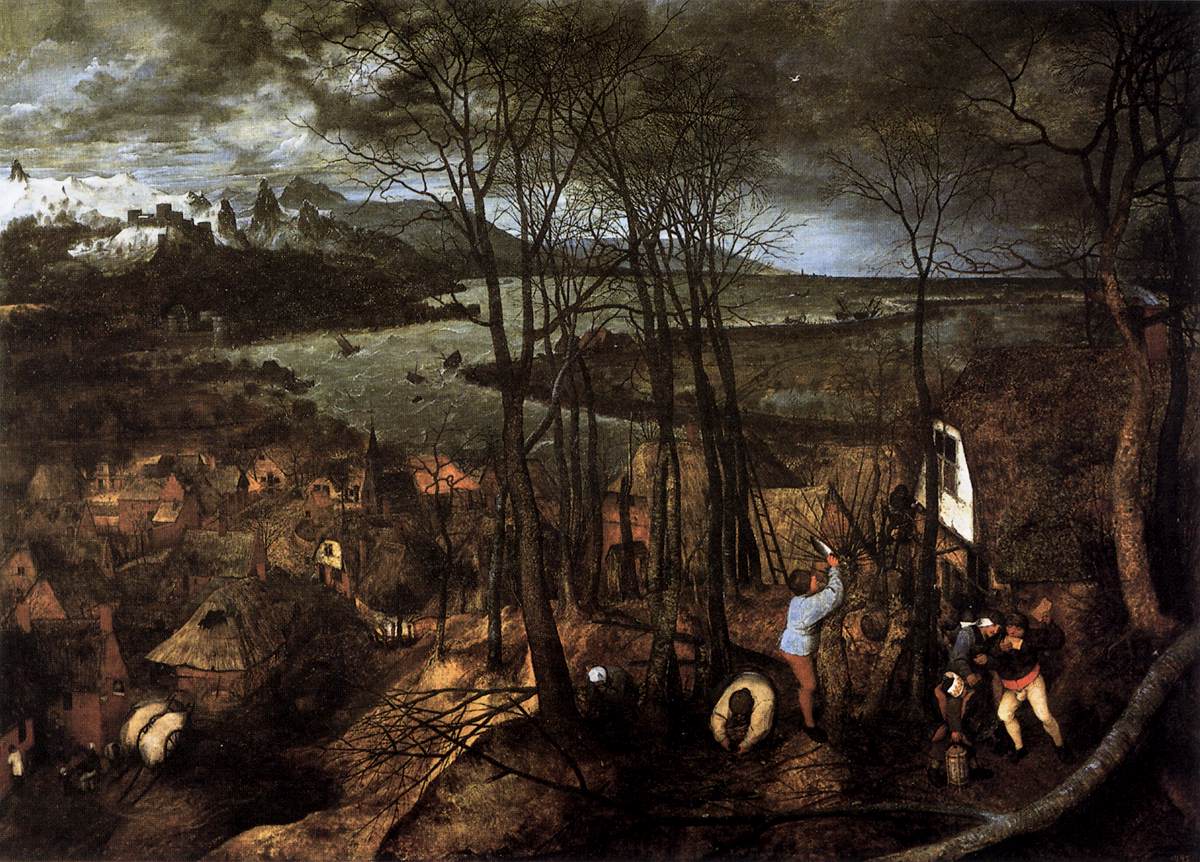Description
The painting Gloomy Day (February) by the Flemish artist Pieter Bruegel the Elder is a Nordic Renaissance masterpiece depicting a winter day in a rural landscape. The composition of the painting is very interesting, as Bruegel uses a technique known as "aerial perspective" to create the illusion of depth in the image. This is achieved by using lighter, less detailed colors in the background of the image, making the landscape appear to recede towards the horizon.
Bruegel's artistic style is highly distinctive, characterized by his attention to detail and his ability to capture the everyday life of peasants. In Gloomy Day (February), Bruegel depicts peasants working in a snowy field, while snow-capped mountains and a village in the distance can be seen in the background. The color of the painting is very interesting, as Bruegel uses cold and dark tones to represent winter, but he also uses warm colors to highlight the life and work of the peasants.
The history of the painting is fascinating, as it is believed to have been painted in 1565, shortly before Bruegel's death. It is known that the painting was owned by the Spanish royal family for many years, and that it was transferred from Spain to Austria in the 18th century. The painting is currently in the Kunsthistorisches Museum in Vienna, where it is one of the most popular works in the collection.
There are some little-known aspects of painting that are interesting to mention. For example, Bruegel is believed to have used his wife as a model for the peasant woman in the image. Furthermore, it is known that Bruegel was a great admirer of Alpine landscapes, and that he often traveled to Switzerland to paint them. It is believed that the view of the mountains in Gloomy Day (February) may have been inspired by the alpine landscapes Bruegel had seen during his travels.
In short, Gloomy Day (February) is an impressive painting that represents the skill and talent of Pieter Bruegel the Elder. Its distinctive artistic style, careful composition, use of color, and fascinating history of painting make it one of the most interesting works of the Nordic Renaissance.

